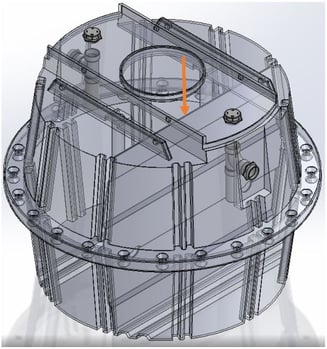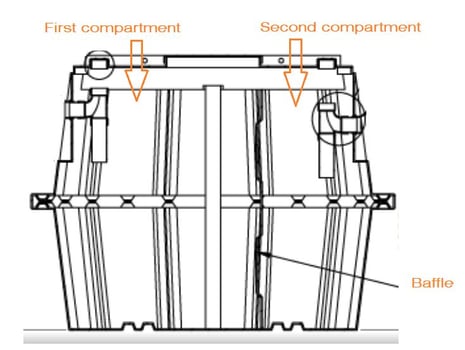The use of baffles and how they contribute to the proper absorption of wastewater in the drain field
The baffle’s placement in the middle or near the middle of the tank creates two ‘compartments’, each one serving a purpose made possible by the baffle.
What happens in the first compartment:
• Bacterial digestion
• Separation of solids from liquid
• Sludge settles at the bottom of the tank
As waste from your house (from toilets, sinks, etc.) flows into the first compartment, the baffle slows its movement to the second compartment. This allows time for the solid wastes to separate from the liquid through bacterial digestion. This process changes solid wastes into sludge that settle at the bottom of the tank below the liquid layer. 
What happens in the second compartment:
• Further bacterial digestion
• Separation of residual solids/sludge from the liquid layer
• More sludge settle at the bottom of the tank
Over time, the liquid layer from the first compartment flows past the baffle and into the second compartment. Here, further bacterial digestion occurs, and more residual solids settle at the bottom of the tank. The result is a cleaner liquid layer in the second compartment than in the first.
Hence, the baffle serves to ensure that the waste flowing out of your tank and into the drainfield is clear of solids/debris. This wastewater is more readily absorbed by the drainfield.
